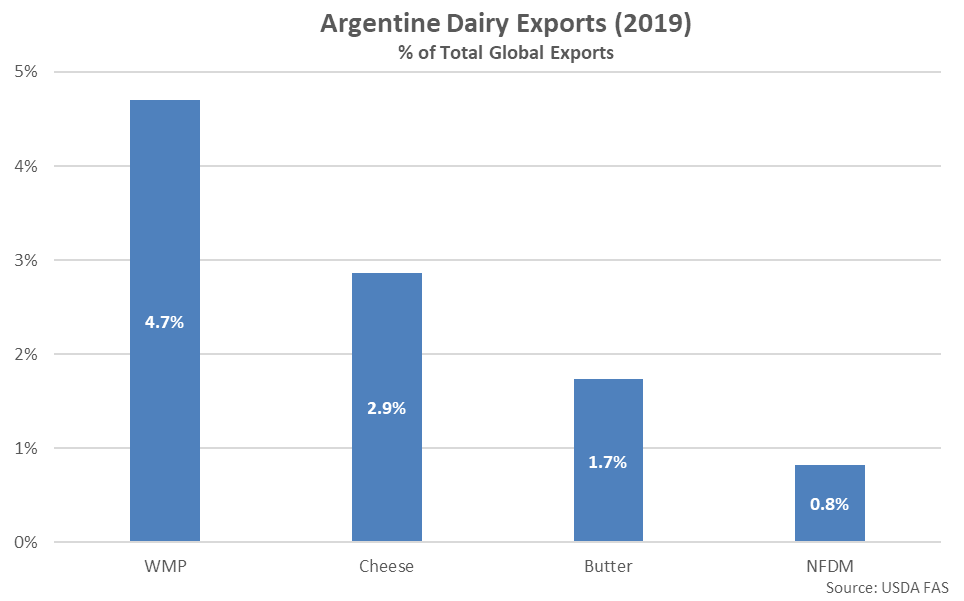Highlights from the updated report include:
- Argentine milk production increased on a YOY basis for the 14th consecutive month during Aug ’20, finishing up 5.0% and reaching a five year high seasonal level.
- USDA is projecting the Argentine dairy cow herd will increase 0.8% throughout 2020, rebounding from the long-term record low levels experienced throughout 2019.
- Argentina is the fifth largest global dairy exporter, accounting for 2.8% of combined butter, cheese, nonfat dry milk and whole milk powder exports throughout 2019. The bulk of Argentine dairy exports are in the form of whole milk powder and cheese.
Additional Report Details According to the Argentina Ministry of Agriculture, Aug ’20 Argentine milk production increased on a YOY basis for the 14th consecutive month, finishing up 5.0% and reaching a five year high seasonal level. ’19-’20 annual Argentine milk production volumes finished 3.8% higher on a YOY basis, reaching a four year high level. ’20-’21 YTD production volumes have increased by an additional 7.6% throughout the first quarter of the production season. 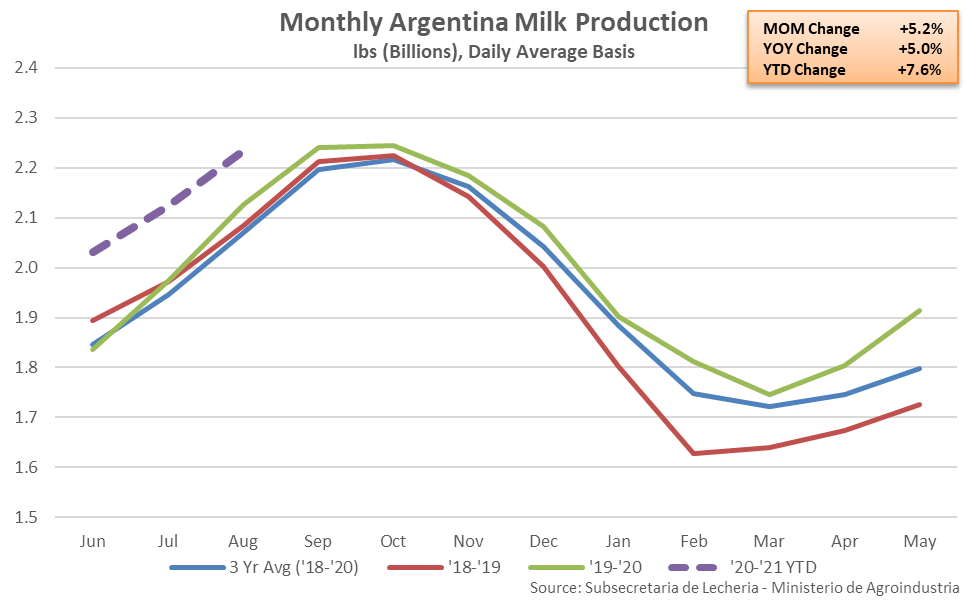 The USDA is projecting Argentine milk production will increase by 4.3% on a YOY basis throughout the 2020 calendar year as a positive margin environment, coupled with positive weather conditions, is expected to incentivize production expansion. USDA noted inflation and currency devaluation will begin to cut into profitability as the year goes on, however, while domestic demand is expected is fall due to a contraction in GDP related to COVID-19. 2020 YTD milk production is up 8.0% on a YOY basis throughout the first two thirds of the calendar year.
The USDA is projecting Argentine milk production will increase by 4.3% on a YOY basis throughout the 2020 calendar year as a positive margin environment, coupled with positive weather conditions, is expected to incentivize production expansion. USDA noted inflation and currency devaluation will begin to cut into profitability as the year goes on, however, while domestic demand is expected is fall due to a contraction in GDP related to COVID-19. 2020 YTD milk production is up 8.0% on a YOY basis throughout the first two thirds of the calendar year. 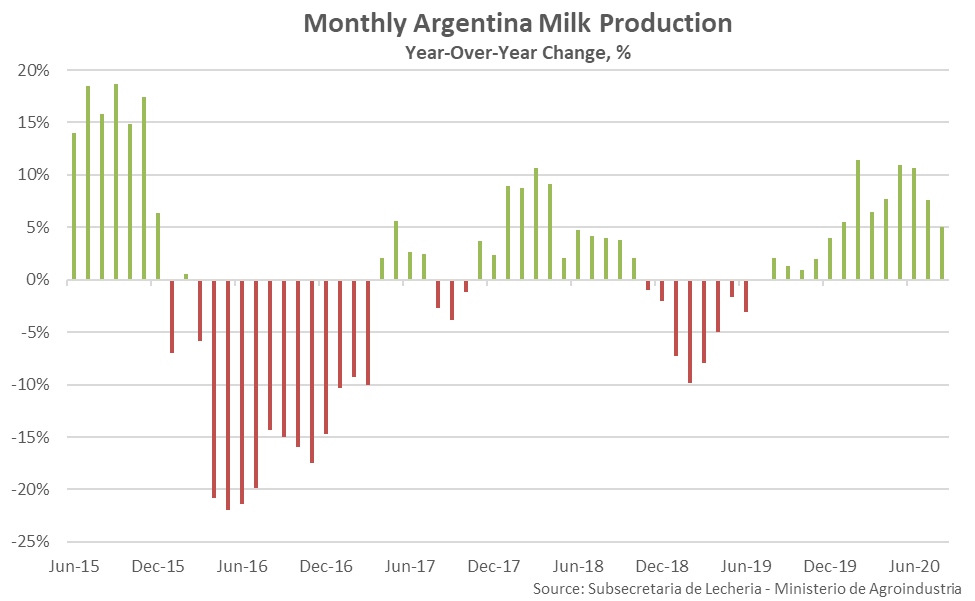 Recently experienced adverse conditions contributed to the Argentine dairy cow herd declining to a long-term record low level throughout 2019, finishing lower for the seventh consecutive year. USDA is projecting the Argentine dairy cow herd will rebound by 0.8% throughout 2020, however. Recent declines in the Argentine dairy cow herd resulted in a consolidation of operations along with a culling of the lowest producing cows.
Recently experienced adverse conditions contributed to the Argentine dairy cow herd declining to a long-term record low level throughout 2019, finishing lower for the seventh consecutive year. USDA is projecting the Argentine dairy cow herd will rebound by 0.8% throughout 2020, however. Recent declines in the Argentine dairy cow herd resulted in a consolidation of operations along with a culling of the lowest producing cows. 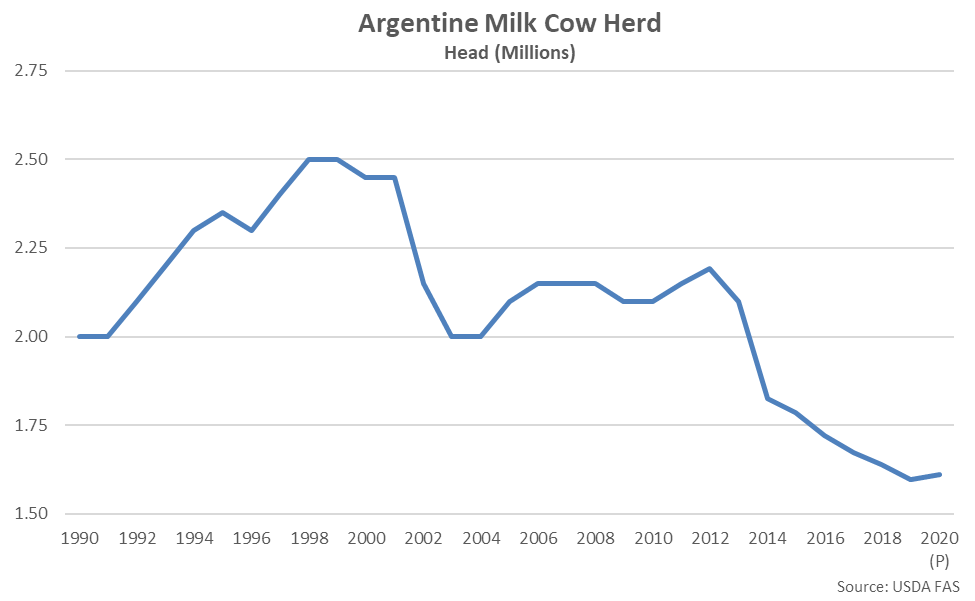 Argentina is the second largest milk producing country in South America, trailing only Brazil, and the fifth largest global dairy exporter, trailing only New Zealand, the EU-28, the U.S. and Australia. Of the aforementioned major dairy exporting regions, Argentina accounted for 3.6% of total combined milk production and 2.8% of combined butter, cheese, nonfat dry milk (NFDM) and whole milk powder (WMP) export volumes throughout 2019.
Argentina is the second largest milk producing country in South America, trailing only Brazil, and the fifth largest global dairy exporter, trailing only New Zealand, the EU-28, the U.S. and Australia. Of the aforementioned major dairy exporting regions, Argentina accounted for 3.6% of total combined milk production and 2.8% of combined butter, cheese, nonfat dry milk (NFDM) and whole milk powder (WMP) export volumes throughout 2019. 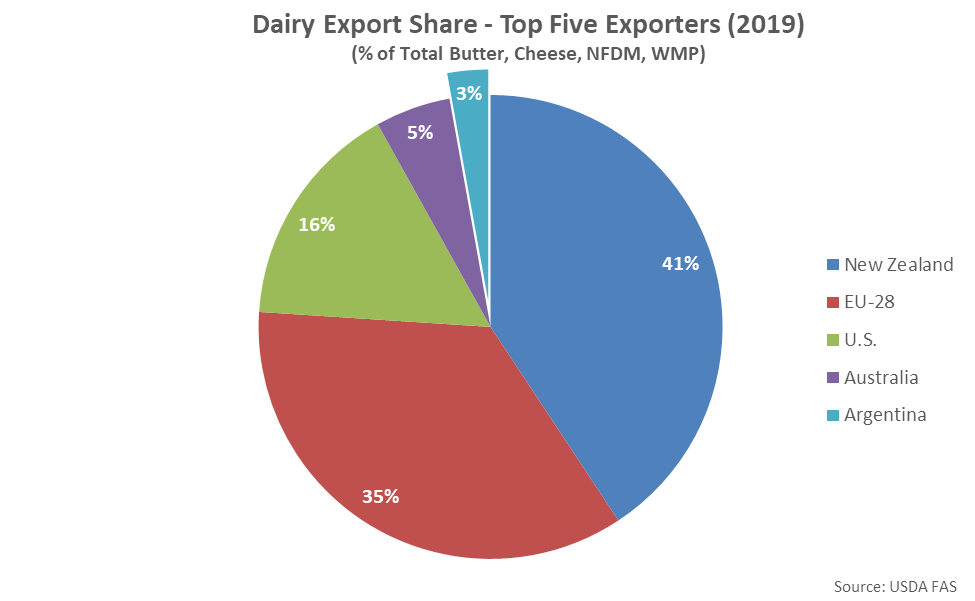 The bulk of Argentine dairy exports are in the form of WMP and cheese. Argentina was the third largest exporter of WMP throughout 2019, trailing only New Zealand and the EU-28, accounting for 4.7% of global WMP export volumes. From a global perspective, WMP markets Aug be most affected by a continued rebound in Argentine milk production.
The bulk of Argentine dairy exports are in the form of WMP and cheese. Argentina was the third largest exporter of WMP throughout 2019, trailing only New Zealand and the EU-28, accounting for 4.7% of global WMP export volumes. From a global perspective, WMP markets Aug be most affected by a continued rebound in Argentine milk production. 